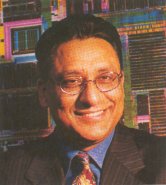Google began in January 1996, as a research project by Larry page who was soon joined by Sergey brin, two Ph.D students at Stanford University, California. They hypothesized that a search engine that analyzed the relationships between websites would produce better ranking of results than existing techniques, which ranked results according to the number of times the search term appeared on a page.
Their search engine was originally nicknamed “BackRub” because the system checked to estimate a site’s importance. A small search engine called Rankdex was already exploring a similar strategy. Originally, the search engine used the stanford university website with the domain google.stanford.edu. The domain google.com was registered on September 15 1997 and the company was incorporated as Google Inc. on September 7 1998. In March 1999, the company moved into offices in Palo Alto, home to several other noted Silicon Valley technology startups. After quickly outgrowing two other sites, the company leased a complex of buildings in Mountain View at 1600 Amphitheatre Parkway from Silicon Graphics (SGI) in 2003.
The company has remained at this location ever since, and the complex has since come to be known as the Googleplex (a play on the word googolplex, a 1 followed by a googol zeros). The ads were text-based to maintain an uncluttered page design and to maximize page loading speed.Keywords were sold based on a combination of price bid and clickthroughs, with bidding starting at US$.05 per click. While many of its dot-com rivals failed in the new Internet marketplace, Google quietly rose in stature while generating revenue.
The name “Google” originated from a misspelling of “googol”, which refers to 10100, the number represented by a 1 followed by one hundred zeros. Having found its way increasingly into everyday language, the verb “google”, was added to the Merriam Webster Collegiate dictionary and the Oxford English Dictionary in 2006, meaning “to use the Google search engine to obtain information on the Internett.”
